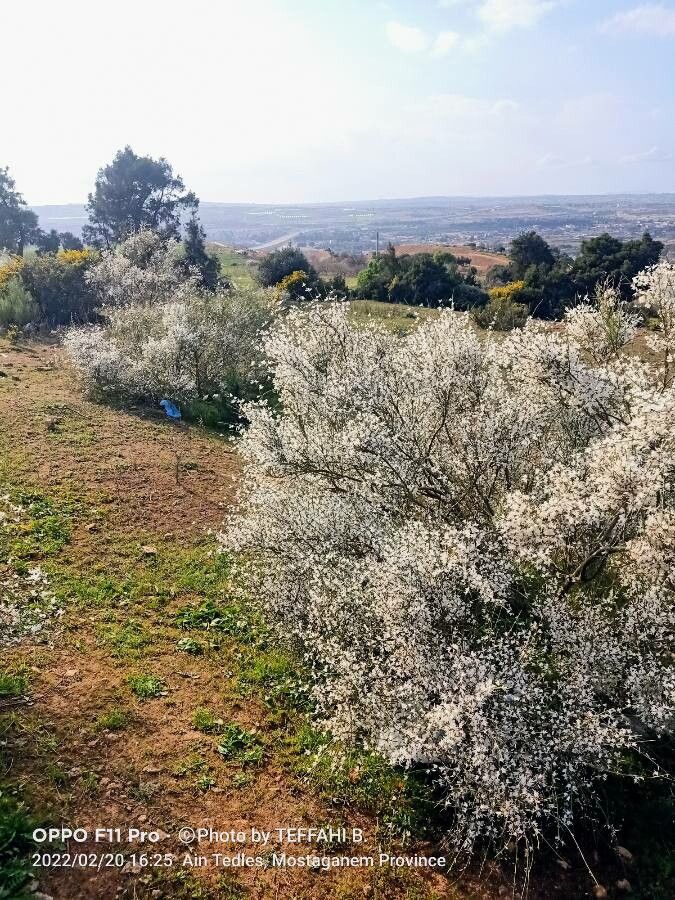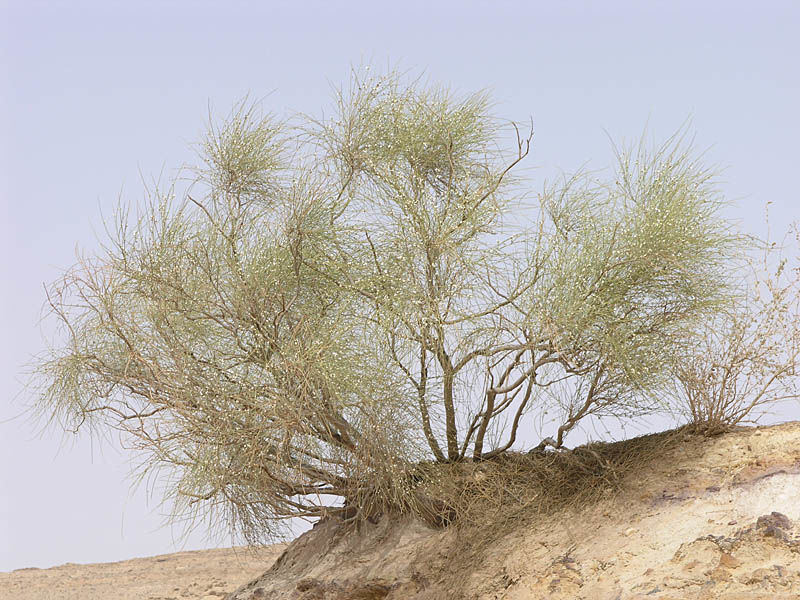White Broom
retama raetam
Also known as: ["False Broom","White Retama"]
Overview
A deciduous shrub native to the Mediterranean region, characterized by its yellow flowers and spiny branches.
Benefits & Perks
["drought tolerant","wildlife attractant (bees, butterflies, birds)"]
Botanical Classification
| Phylum: | Magnoliophyta |
| Class: | Magnoliopsida |
| Order: | Fabales |
| Family: | Fabaceae |
| Genus: | Retama |
| Botanical Name: | Retama raetam |
Plant Characteristics
Basic Information
- Category: Shrubs
- Suitable Location: arid or semi-arid regions, rock gardens, or xeriscapes
- Suitable For:
- Is Weed: No
- Allergenicity: low
Environmental Needs
- Climate: {"temperatureRange":"5–45°C"}
- Hardiness: {"zones":"8–11"}
- Misting: rarely required
- Drainage: Fast-draining to prevent waterlogging.
- Soil Type: Well-draining cactus or succulent mix with added perlite or coarse sand.
Maintenance Level
- Maintenance Level: low
- Toughness Level: high
- Pruning Frequency: Annually in late winter or early spring before new growth begins.
- Pruning Intensity: Moderate; remove up to one-third of old growth if necessary.
Care Details
Ideal Sunlight Coverage:
Full sun (6–8 hours of direct sunlight daily); adjust for intense summer heat by providing partial shade.
Sunlight Tolerance Tips:
Acclimate plants gradually to intense sunlight; avoid sudden exposure to prevent scorching; for indoor plants, place near south-facing windows with unobstructed light.
Care Requirements
Care Difficulty
moderatemoderate
Sunlight
full sun
Rotate plant weekly for even growth; use sheer curtains to filter harsh midday sun; avoid placing near reflective surfaces that intensify light.
Watering
every 4–6 weeks in summer, every 8–10 weeks in winter
Water thoroughly until runoff, ensure excellent drainage, and avoid frequent light watering.
Soil
well-drained, sandy soil
pH: Slightly acidic to neutral (pH 6.0–7.0).
Ensure pots have drainage holes; avoid heavy garden soil; top-dress with gravel for extra drainage.
Temperature
Ideal range 20–30°C (68–86°F); tolerates brief dips to 5°C (41°F) but thrives in warmth.
Protect from frost; avoid placing near drafty windows or air vents; maintain consistent temperatures to prevent shock.
Fertilizing
every 3 months during active growth
Fertilize only when actively growing; flush soil occasionally to prevent salt buildup; use a low-nitrogen formula for cacti/succulents.
Propagation
Methods
Stem cuttings or division of basal shoots.
Step-by-Step Propagation Guide
- Take a 10–15 cm cutting.
- Let it callus for 1–2 days.
- Plant in medium.
- Keep moist but not waterlogged.
- Wait for roots.
Best Time: Spring or early summer when the plant is actively growing.
Environment
Warm (21–27°C), high humidity (70–80%), and bright indirect light.
Medium
Well-draining mix of cactus soil and perlite (1:1 ratio).
Hormone
Optional but recommended for faster rooting.
Timeline
Roots develop in 3–6 weeks; establish in new pot within 2–3 months.
Tools Needed
Sharp knife, rooting hormone, small pot, well-draining soil mix.
Quick Tips
Allow cuttings to callus before planting; use bottom heat to speed rooting; avoid overwatering new cuttings.
Pruning & Repotting
Pruning Guide
Method
Selective pruning of individual branches; avoid heavy shearing.
Pruning Plan
Remove dead or damaged branches to maintain shape and encourage new growth; prune selectively to control size.
Tools
Pruning shears, gloves, disinfectant for tools.
Checklist
Disinfect tools, prune dead/damaged growth, shape plant, clean up debris, monitor recovery.
Repotting Guide
Best Season
Spring, when the plant is entering active growth.
Pot Size
One size larger pot (e.g., +2–3 cm in diameter).
Method
Remove plant gently, trim roots if crowded, place in slightly larger pot with fresh soil, ensure drainage holes are clear.
Suggestions
Repot every 2–3 years or when roots fill the pot; necessary to refresh soil and provide space.
Checklist
Check root bound status, prepare new pot, trim roots if needed, use fresh soil, water lightly after repotting.
Advanced Care Tips
Watering Mastery
Watering Checklist
Check soil moisture, water deeply, ensure drainage, adjust for season, monitor plant response.
How to Apply Water Properly
Water directly at the root zone, apply slowly to avoid runoff, ensure water penetrates deeply, water in the morning, and allow excess to drain completely.
Watering Schedule Tips
Water deeply but infrequently, allowing soil to dry out between waterings. Reduce watering in winter to once every 4–6 weeks, depending on conditions.
Soil Improvement
Add coarse sand, perlite, or pumice to improve aeration and drainage; incorporate organic matter like compost for fertility.
Temperature Stress Management
Signs of Temperature Issues
Chlorosis or necrosis in extreme cold; wilting, leaf drop, or stunted growth in excessive heat.
Cold Stress
Low temperatures slow metabolic processes, reduce water uptake, and can cause root damage or dieback.
Solution: Move to a warmer location; apply a thick layer of mulch to insulate roots; avoid overwatering in cold conditions.
Hot Stress
Excessive heat increases transpiration, leading to dehydration, leaf scorch, and potential dormancy.
Solution: Provide afternoon shade; increase humidity with misting; water deeply in early morning or late evening.
Fertilizing Guide
Fertilizing Checklist
Check growth phase, dilute fertilizer, apply to moist soil, avoid foliage contact, stop in winter.
Fertilizing Method
Use a balanced, water-soluble fertilizer diluted to half strength every 4–6 weeks during active growth (spring and summer); avoid fertilizing in winter.
Common Problems & Solutions
Toxicity Warning
Cats
ToxicCats are particularly sensitive to the toxic compounds in Retama raetam. Ingestion of seeds or bark can cause severe gastrointestinal and neurological symptoms, potentially leading to more serious health issues.
⚠️ Symptoms:
🌿 Toxic Parts:
⚡ Toxic If:
if eaten
Dogs
ToxicIn dogs, ingestion of Retama raetam seeds and bark can lead to moderate to severe gastrointestinal upset and potential neurological symptoms due to the presence of toxic alkaloids.
⚠️ Symptoms:
🌿 Toxic Parts:
⚡ Toxic If:
if eaten
Humans
Slightly ToxicRetama raetam contains compounds that can cause mild gastrointestinal distress and potential neurological effects if ingested in significant quantities. The seeds and bark are the most toxic parts due to their higher concentration of alkaloids.
⚠️ Symptoms:
🌿 Toxic Parts:
⚡ Toxic If:
if eaten
Frequently Asked Questions
Q: Is Retama raetam suitable for dry climates?
A: Yes, it is highly drought-tolerant and thrives in arid conditions.
Q: Does Retama raetam attract wildlife?
A: Yes, it is known to attract bees, butterflies, and birds.
Q: Is Retama raetam toxic to pets?
A: There is insufficient data to confirm its toxicity to pets.
Quick Reference
| Family: | Fabaceae |
| Care: | moderate |
| Light: | full sun |
| Water: | every 4–6 weeks in summer, e |
Get Expert Care Tips
Download the Plantious app for personalized care reminders and plant identification!
Google Play App Store








